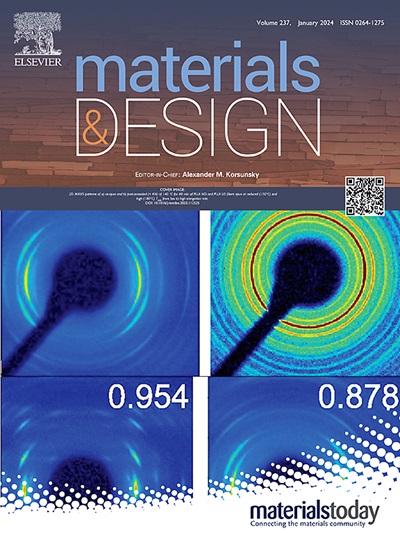A high-throughput framework for pile-up correction in high-speed nanoindentation maps
IF 7.6
2区 材料科学
Q1 MATERIALS SCIENCE, MULTIDISCIPLINARY
引用次数: 0
Abstract
Accurate mapping of mechanical properties across extensive areas in heterogeneous materials is essential for understanding phase-specific contributions to strength and hardness. High-speed nanoindentation mapping enables their x-y spatial mapping through a fast and dense grid of indents. However, accurate measurements are complicated by pile-up, the plastic displacement of material laterally and vertically around an indent, causing hardness and modulus overestimation, especially in materials with varying phase compliance. Traditional correction methods rely on time-consuming, localized Atomic Force Microscopy measurements, which are impractical for large-area mapping. This study presents a fast and semi-automated solution using High-speed nanoindentation mapping-induced surface roughness changes Sa, quantifiable by optical profilometry, with machine learning to correct pile-up over extensive areas selectively. By correlating these roughness changes with the Atomic Force Microscopy-measured pile-up height, we derived universal calibration functions for a wide range of bulk materials and thin films, validated through Finite Element Modeling. Applied to a benchmark cobalt-based, chromium-tungsten alloy, the method uses unsupervised clustering to identify piling-up phases in the cobalt matrix while excluding the hard carbides. This approach reduced the hardness and modulus errors by up to 7 %, uniquely enabling accurate phase-specific property mapping in high-speed nanoindentation, advancing the mechanical microscopy frontier.

求助全文
约1分钟内获得全文
求助全文
来源期刊

Materials & Design
Engineering-Mechanical Engineering
CiteScore
14.30
自引率
7.10%
发文量
1028
审稿时长
85 days
期刊介绍:
Materials and Design is a multi-disciplinary journal that publishes original research reports, review articles, and express communications. The journal focuses on studying the structure and properties of inorganic and organic materials, advancements in synthesis, processing, characterization, and testing, the design of materials and engineering systems, and their applications in technology. It aims to bring together various aspects of materials science, engineering, physics, and chemistry.
The journal explores themes ranging from materials to design and aims to reveal the connections between natural and artificial materials, as well as experiment and modeling. Manuscripts submitted to Materials and Design should contain elements of discovery and surprise, as they often contribute new insights into the architecture and function of matter.
 求助内容:
求助内容: 应助结果提醒方式:
应助结果提醒方式:


